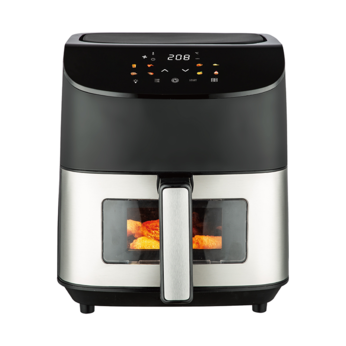The durability of a multi-functional cooking pot heavily depends on the materials used in its construction. For instance, stainless steel is highly favored for its resistance to corrosion, staining, and rust, making it well-suited to endure high cooking temperatures. It is also non-reactive, which means it won’t impart flavors or odors to food, even after frequent use at high heat. Cast iron, although heavier, is another durable option that excels in heat retention, ensuring consistent cooking temperatures. It can withstand very high heat and is ideal for slow cooking, searing, and even baking. However, cast iron requires proper maintenance, such as seasoning and avoiding sudden temperature changes, to prevent rusting. Aluminum, while lighter and a good conductor of heat, may not be as durable at extreme temperatures unless it is anodized, which hardens the surface to resist scratches and corrosion. The choice of material directly impacts how the pot will perform and last over time, especially under intense heat.
The multi-functional cooking pot is designed to handle high temperatures, whether used on a stovetop or in the oven. Quality pots can withstand temperatures of up to 450°F (232°C) or more without warping or losing their shape. However, the heat resistance of the pot also depends on its structure. For example, cast iron can handle extremely high temperatures, often exceeding those that would damage other materials. Stainless steel also maintains its integrity under heat, but over time, excessive exposure to very high temperatures may cause the metal to discolor or warp, especially if the pot is thin. For pots with non-stick coatings, high heat can lead to degradation of the surface, potentially causing the coating to peel or lose its effectiveness.
To ensure durability under frequent and high-temperature use, many multi-functional cooking pots are designed with reinforced features. Handles, for example, are often secured with rivets or welded joints to prevent them from loosening over time. These handles are typically made from heat-resistant materials, such as bakelite or stainless steel, to ensure they remain cool to the touch and do not become brittle with prolonged exposure to heat. Additionally, many high-quality pots feature dual-layered bases or encapsulated bottoms, where a layer of aluminum is sandwiched between stainless steel. This design enhances heat distribution, reduces the risk of warping, and improves the overall lifespan of the pot by preventing direct exposure of the cooking surface to excessive heat fluctuations.
The durable multi-functional cooking pot should be able to withstand regular use without significant damage to its interior. Non-stick coatings or ceramic finishes are often applied to ensure that food does not stick to the surface, making cooking and cleaning easier. These coatings are designed to resist scratching, staining, and chipping, which could otherwise compromise their functionality over time. However, it is important to note that non-stick surfaces can degrade under high heat or if subjected to abrasive cleaning methods. To maximize the lifespan of these coatings, it’s essential to avoid using metal utensils and to follow proper cleaning protocols. Ceramic coatings, although more heat-resistant and non-toxic, can still wear over time if the pot is exposed to extreme heat regularly.


 English
English 中文简体
中文简体 English
English 中文简体
中文简体
















